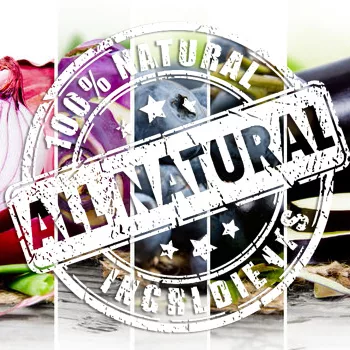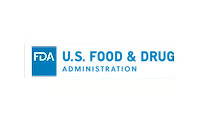It’s Only Natural: Recent Developments Regarding the Term “Natural” in Food Labeling

The question of which foods can be labeled as “natural” continues to be one of the most commonly litigated issues relating to food labeling. A recent Consumer Reports survey found that more than half of consumers seek out products with a “natural” food label, and that nearly half of consumers incorrectly believe that the use of the term “natural” is independently verified.[1] Against this backdrop, it is only natural that the use of the term is being increasingly discussed by the U.S. Food and Drug Administration (FDA) and legislators. Although FDA has so far declined to resolve the issue, that may be changing in the relatively near future. FDA recently solicited public comments on the term “natural” in food labeling, including a request for comments on whether FDA should formally define the term. In doing so, FDA expressly cited as a motivating factor various citizen petitions regarding use of the term “natural” in food labeling. While it remains to be seen whether FDA will take any action following the close of the comment period on May 10, 2016, it is clear that “natural” labeling is receiving increased attention.
The FDA Stance on “Natural”
To date, FDA has not promulgated a formal rule explaining if or when any food may be labeled “natural.” The closest that FDA has come to any position regarding “natural” is a 1993 notice in the Federal Register that states the use of the term “natural” on a food label is not misleading when “nothing artificial or synthetic . . . has been included in, or has been added to, a food that would not normally be expected to be in the food.”[2]
Warning letters have also shed some light on what FDA has considered “natural.” For example, in November 2011, FDA issued a warning letter to Alexia Foods concerning an “all natural” claim on its “Roasted Red Potatoes & Baby Portabella Mushrooms” product, which contained the “synthetic chemical preservative” disodium dihydrogen pyrophosphate.[3] The synthetic chemical preservative was an additive that FDA said “‘would not normally be expected to be in the food.’”[4]
However, on November 10, 2015, FDA announced that it would be soliciting public comments on the use of the term “natural” in food labeling.[5] The comment period opened on November 12, 2015, and while it was initially expected to close on February 10, 2016, FDA subsequently extended the comment period to May 10, 2016 “in response to requests for an extension to allow interested persons additional time to submit comments.”[6] FDA is specifically seeking comments on whether or not it should define the term “natural,” and if so, how the term should be defined.[7]
FDA is also seeking comments regarding how it should determine the appropriate use of “natural” in food labels, for example, whether it should consider manufacturing processes and whether the term should apply only to “unprocessed” foods. FDA stated that its decision to request comments is partly in response to three Citizen Petitions seeking clarification on the term “natural,” including one by the Grocery Manufacturers Association requesting that FDA “issue a regulation authorizing statements such as ‘natural’ on foods that are or contain foods derived from biotechnology,” and one asking the FDA to prohibit the use of “natural” in food labels altogether. FDA also explained that private litigation surrounding the term “natural” has led some federal courts to seek administrative determinations from FDA on whether or not food products containing genetically engineered ingredients or high fructose corn syrup may be labeled as “natural.”
In announcing its request for public comment, FDA acknowledged that it has not previously issued a rule formally defining the term “natural,” but it did refer to its “longstanding policy” that the term “natural” means that “nothing artificial or synthetic (including all color additives regardless of source) has been included in, or has been added to, a food that would not normally be expected to be in that food.” It remains to be seen whether or not FDA will take action after the current comment period.
Proposed Federal Legislation on Food Labeling
Recently, legislators in the U.S. House of Representatives and Senate have also proposed various bills that could affect the use of the term “natural” in food labeling. The Food Labeling Modernization Act (FLMA) of 2015 (an updated version of legislation by the same name introduced in the House in 2013) would amend the Federal Food, Drug and Cosmetic Act (FDCA) to clarify when a food labeled “natural” is misbranded.[8] FLMA directs the Secretary of Health and Human Services to promulgate a rule defining the term “natural” in a manner “to exclude, at a minimum, the use of any artificial food or ingredient (including any artificial flavor or added color) or any synthetic substance” and “based on data, including data on consumers’ understanding of the term as used in connection with food.”[9] Corn syrup, high-fructose corn syrup and cocoa processed with alkali are among the ingredients that the act defines as “artificial.”[10] The act also calls for the Secretary of Health and Human Services to “conduct consumer surveys and studies and issue a timely call for relevant public submissions regarding relevant consumer research, including with respect to consumer understanding of the term ‘natural” in relation to the term ‘organic’” and to “fully consider the results of such surveys and studies, as well as such public submissions.”[9]
Given that a number of lawsuits regarding “natural” labeling involve the presence of genetically modified organisms (GMOs), it is not surprising that the issue of “natural” labeling has also come up in proposed legislation seeking to regulate the presence and labeling of GMOs in food. The Genetically Engineered Food Right-to-Know Act—originally introduced in 2013 and subsequently reintroduced in February 2015—would amend FDCA to require a food containing GMOs to reflect so in its labeling or risk being considered “misbranded.”[11] The act also would prohibit the term “natural” in labeling of GMO-containing foods.
In addition, on July 23, 2015, the House of Representatives passed the Safe and Accurate Food Labeling Act (SAFLA), but, on March 16, 2016, the bill did not receive enough Senate votes to pass, with 48 senators voting for it and 49 voting against it. SAFLA would have established a federal system of voluntary labeling of GMOs in foods, as well as mandatory review by FDA to determine the safety of individual GMOs before they are brought to market.[12] Furthermore, the act would have required FDA to enact regulations regarding the term “natural” in labeling for GMO foods within 30 months after enactment of the law. SAFLA would also have expressly precluded states from requiring mandatory GMO labeling and from banning GMO crops.
Litigation Involving “Natural” Labeling
In the meantime, the question of which foods should be permitted to bear “natural” labeling continues to be litigated in courts across the country. Initially, the majority of these lawsuits involved products containing high-fructose corn syrup, challenging Nature Valley chewy granola bars sold as “100% Natural” because they contained one or more ingredients that plaintiffs claimed to be non-natural, such as high fructose corn syrup.[13] But over time, consumer class action claims involving “natural” labeling have expanded in scope.
More recently, a number of lawsuits have emerged across the country challenging the use of “natural” labeling on food products containing GMOs. As of late 2015, more than 80 cases had been filed concerning the labeling of snacks, cereals and other food products that allegedly contain GMOs, alleging that snack products labeled as “natural” were deceptively marketed and advertised because they contained genetically modified, artificial and/or synthetic ingredients;[14] alleging as untrue and misleading General Mills’s representation that its Nature Valley granola bars were “100% Natural” because the products contain GMOs and “GMOs are not ‘natural’ and certainly not ‘100% Natural.’”[15]
It remains to be seen whether FDA’s request for comment on the use of “natural” in food labeling will lead to more of these cases being stayed or dismissed on primary jurisdiction grounds.
Conclusion
The issue of “natural” labeling on foods continues to be discussed within FDA, before legislative bodies, within our courts and among consumers. As the landscape continues to evolve, food industry companies and their legal counsel are advised to keep up to date with emerging trends, changing legal standards, legislative movements and the possibility of regulatory response. In addition, companies considering submitting comments to FDA before the close of the comment period on May 10, 2016 should consult with experienced counsel and coordinate with leading industry groups.
Nilda M. Isidro, Esq., is a partner at Goodwin Procter LLP in New York City and member of the firm’s Food Industry Group, which provides strategic counseling to food, beverage, and supplement businesses on a range of issues, including product launches, regulatory compliance, labeling and warnings issues, litigation avoidance and risk management. She is also a member of Goodwin Procter LLP’s Products Liability & Mass Torts Practice, specializing in food, supplements, medical devices and pharmaceuticals. This article states opinions of its authors, and does not necessarily represent opinions of Goodwin Procter LLP or its clients. Ms. Isidro would like to thank Lindsay Hoyle for her assistance with this article.
References
1. www.consumerreports.org/food-safety/peeling-back-the-natural-food-label/.
2. 58 Fed. Reg. 2302, 2407 (Jan. 6, 1993).
3. FDA Warning Letter to Alexia Foods, Inc. (Nov. 16, 2011).
4. Id. (quoting 58 Fed. Reg. 2407).
5. www.fda.gov/Food/GuidanceRegulation/GuidanceDocumentsRegulatoryInformation/LabelingNutrition/ucm456090.htm.
6. 80 Fed. Reg. 80, 718 (Dec. 28, 2015) (to be codified at 21 C.F.R. pt. 101).
7. 80 Fed. Reg. 69, 905 (Nov. 12, 2015) (to be codified at 21 C.F.R. pt. 101).
8. H.R. 4061, 114th Cong. (as proposed Nov. 18, 2015); S. 2301, 114th Cong. (as proposed Nov. 18, 2015).
9. H.R. 4061 § 4; S. 2301 § 4.
10. H.R. 4061 § 11; S. 2301 § 11.
11. H.R. 913, 114th Cong. (as proposed Feb. 12, 2015); S. 511, 114th Cong. (as proposed Feb. 12, 2015).
12. Safe and Accurate Food Labeling Act, H.R. 1599, 114th Cong. (as passed by H.R., July 23, 2015).
13. Wright v. Gen. Mills, Inc., Civ. No. 08cv1532 L(NLS), 2009 WL 3247148, at *1 (S.D. Cal. Sept. 30, 2009).
14. Class Action Compl. at 1-5, Korn, et al. v. Snyder’s-Lance Inc., No. 3:15-cv-02593 (N.D. Cal. June 10, 2015) (Dkt. 1).
15. Second Am. Class Action Compl. at 3, 4, 8-17, Rojas v. Gen. Mills, Inc., No. 12-cv-05099-WHO, 2014 WL 1248017 (N.D. Cal. Mar. 26, 2014).
Looking for quick answers on food safety topics?
Try Ask FSM, our new smart AI search tool.
Ask FSM →







